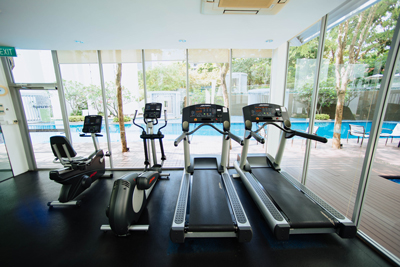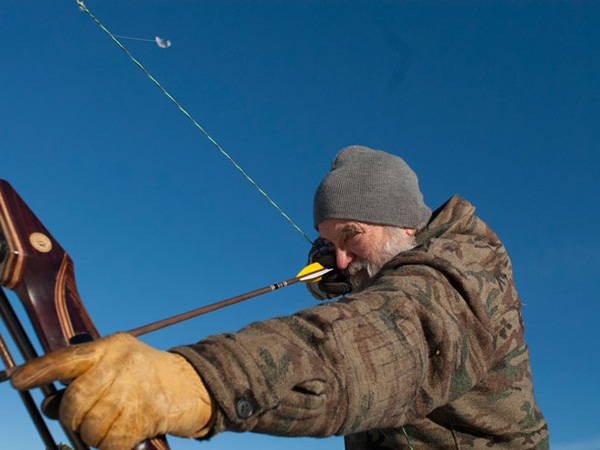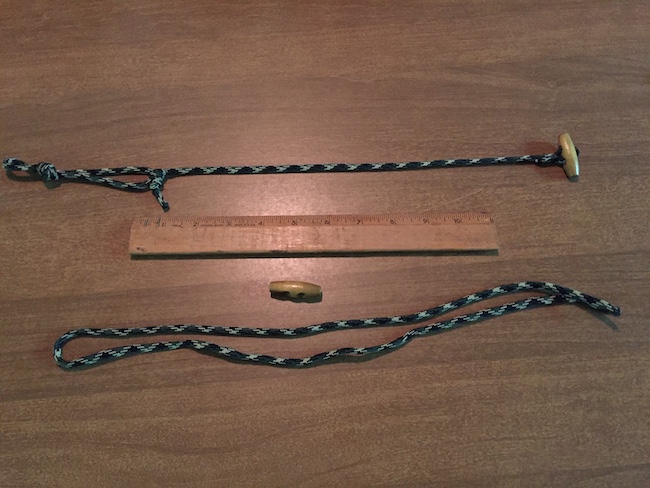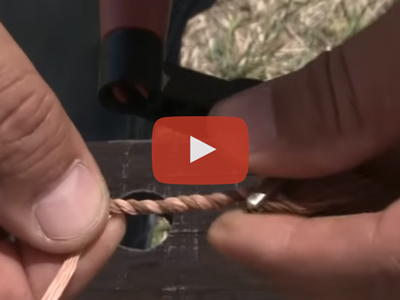My first few hikes of the hunting season are almost always really brutal. Why? Because I’m not prepared for them and jump into the beginning of the season thinking I’m still in the same shape I was at the end of last season.
Over the last few years since getting my personal training certification, I’ve learned that if I prepare correctly, I can start the season with the exact hikes I want to, instead of slowly working up to the full day scouting trips and wasting a large part of my season. Ultimately, I can maximize my scouting efforts in the long term by doing a few simple, easy to implement solutions.
My favorite of those solutions that really primes me to be ready for big hikes (and just having more energy through the day) is High-Intensity Interval Training or HIIT.
HIIT is a much shorter and more intense method of practicing cardio. Instead of spending 45+ minutes going at a mild or moderate pace on a treadmill, jogging, or elliptical machine – you can spend 25 minutes or less doing similar exercises, but at an increased pace to accomplish the same amount and even more.
If you’re interested in maximizing your scouting and hunting trips and maintaining your physical fitness beyond hunting season, then HIIT is for you. Being willing to dedicate more effort (all while gaining more time) is the key, and committing to it is the first step to flourishing in your hunt.
If you’re ready, let’s dive in. Before beginning a rigorous workout schedule discuss the program with your physician, especially if you are over 50, take regular medications, or have a chronic illness.
What is HIIT?
High-intensity interval training – or HIIT – is a type of cardio where you switch between periods of working at a very high effort to periods of low effort recovery. It’s not too complicated. You basically want to get your heart rate up close to your max heart rate for a short period of time, then slow down and allow yourself to recover, and then repeat the process. Check out this calculator to find your recommended heart rate (goal is somewhere between 60-85%) In this article, I’ll go over:
- How intense the working intervals should be (Sprints)
- How long you should slow down and recover (Active Recovery)
- How long the total workout should be (Workout Duration)
- How often you should do them (Frequency)
Before we dive into the “how-to,” let’s look at the “why” for HIIT workouts.
Why HIIT
Compared to steady state cardio (i.e. walking, hiking, or jogging for 45+ minutes, long-distance swimming, or any kind of endurance workout where you maintain a steady heart rate), HIIT is a much shorter, more intense workout. In this short amount of time, however, you can accomplish the same amount – in terms of VO2 max and fat loss – or even more, than you would in double the time spent on steady state cardio exercises.
Here’s a quick video better explaining VO2 Max.
HIIT is beneficial because you get more physical benefits in less time compared to “regular” cardio. You’re probably asking: What does this have to do with hunting, and why should I try it? HIIT workouts will quickly boost your endurance and improve your VO2 max – making nearly everything you do in the mountains easier. Plus, you don’t have to spend hours every day on a treadmill or elliptical machine, you’ll see these results faster than a traditional cardio workout.
Hiking and almost all other physical activity should take a lot less effort after doing HIIT and getting more used to it. By pushing your cardiovascular system to higher levels, your overall fitness will improve dramatically. If you’re also eating right and staying active, you should see increased fat loss too.
Overall, doing regular (at least two 20 minute sessions per week) HIIT workouts will increase your fat loss, cardiovascular health, and endurance faster than almost any other kind of traditional cardio. These improvements will help you hike harder, faster, and longer than ever before. Let’s see what one of these workouts looks like.
The Right Way To Do A HIIT Workout

Choose your movement
The main criteria here is to make sure you can get your heart rate up quickly with whatever the movement is. You should be close to “all-out” within 10-15 seconds of starting. My personal favorites are rowing, sprinting, and biking – but there are a ton of other good options including:
- Swimming
- Elliptical machine
- Jump roping
- Stairmaster
If you have a hard time with the higher-impact movements such as sprinting, try out another movement that is more low-impact, such as swimming. The goal is to get your heart rate up, not to overly stress out your joints or hurt yourself.
Duration and intensity of the workout – sprints
This part of the workout is where the magic happens. This is where you’ll need to push yourself and stretch your limits.
**Be smart – you don’t want to hurt yourself either. Over time this will improve and you’ll have a better idea of how hard you can go. Start off a little bit easier, and challenge yourself more and more.
There is a happy medium between going too easy – where you won’t see a ton of benefits – and going too hard – where you overexert yourself and get hurt. The goal is to accomplish about 90% of your all-out effort. This is where you’re breathing really heavy and almost can’t get enough air that your body wants.
You’ll want to maintain this level of intensity for 1-2 minutes at first, depending on how fit you are. Maximum results come in when you can go at this level of intensity for 4-5 minutes, but this is something that everyone needs to work up to.
Once the high-intensity interval is over, it’s time for the rest interval.
Active recovery
At first, your rest intervals can be up to twice as long as your working intervals, for a 2:1 ratio. Try working for a 1:1 rest to working ratio as you improve.
For example, if you do a swimming sprint for 2 minutes, then start off by doing a resting interval for 4 minutes. Work towards 2 minutes of work and 2 minutes of rest.
The rest intervals shouldn’t be a complete standstill, but “active recovery.” For example, after doing a hard swim for 2 minutes, don’t sit on the edge of the pool to recover. Try and keep swimming, just at a much lower intensity and get your breath back. You don’t want to completely stop unless you have to.
Total duration

Start off with a shorter total session (10-20 minutes). If you go too hard the first time, you won’t
want to come back (but expect to be sore no matter what). As you improve, increase your sessions to be a total of 25-30 minutes.
An example of a 20-minute session could be four 2-minute working intervals, with 4 minutes of rest for each – each total interval would be 6 minutes long.
Frequency
Twice a week is a great starting point for HIIT workouts. With 20-minute sessions, this is a total of 40 minutes per week of cardio. Not too bad, considering that’s less than one of the average steady-state cardio workouts.
As you improve, increase this to get a total of 1 – 1.5 hours per week of cardio. This is the optimal level to really see results. 1.5 hours per week is three 30-minute HIIT sessions.
Full Workout
Here’s what a beginner HIIT workout could look like on a stationary bike:
- 2-3 minutes of warm-up: Go easy, get the blood flowing. Don’t want to immediately dive in and go all-out.
- First working interval: pick up the pace and get yourself to be breathing heavy, you should be pushing hard enough to get there in 15 seconds or less. Can increase the bike tension to help. Go for at least 1-1.5 minutes.
- First resting interval: decrease the tension and slow down – but don’t stop completely. Go easy like this until you feel mostly recovered, should be about 2-3 minutes.
- Second working interval: increase the tension and pick up the pace again. Try to go as hard or harder than the first interval. Go for 1-1.5 minutes.
- Second resting interval: release some of the tension, get your breath back. Go for 2-3 minutes or until you feel mostly recovered.
- Repeat the process for 10-15 minutes if it’s your first time. This should be pretty tough, but it’s short-lived. After doing this a few times you’ll notice that it gets easier and easier – that’s when it’s time to pick up the intensity. Either do longer working sessions or longer total sessions. Keep pushing!
A quick review, here’s how to put together a HIIT workout:
- Choose movement – Rowing, biking, swimming, etc..
- Sprint for at least 1 minute with that workout
- Slow down the pace, get some active recovery for up to twice as long as your sprint
- Pick up the pace again, start sprinting
- Repeat for 10-20 minutes
- Do this at least twice per week
Conclusion
HIIT workouts by design are tough, but they are so beneficial and have a huge impact on your overall health. Workouts like this have far greater benefits than maximizing your hunting season – no matter who you are. Woman or man, young or old, active or sedentary; HIIT holds the key to a greater quality of life. For a much more in-depth look at the benefits, questions or concerns regarding this form of exercise, check out Legion Athletics article on HIIT.
Please email me at zack@BigGameBowhunter.com with your favorite HIIT workouts or for additional comments or suggestions!







Leave A Comment